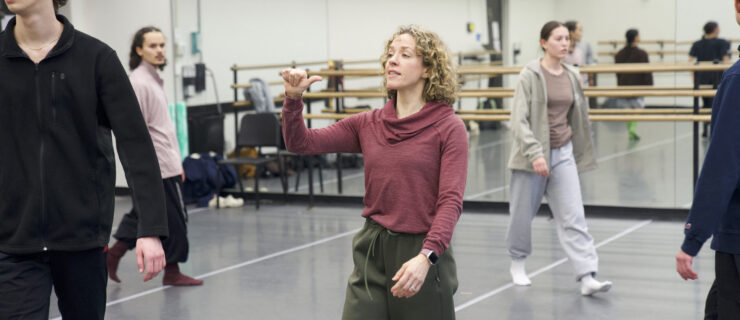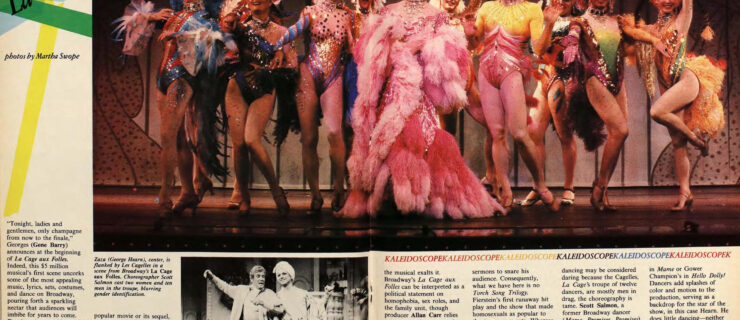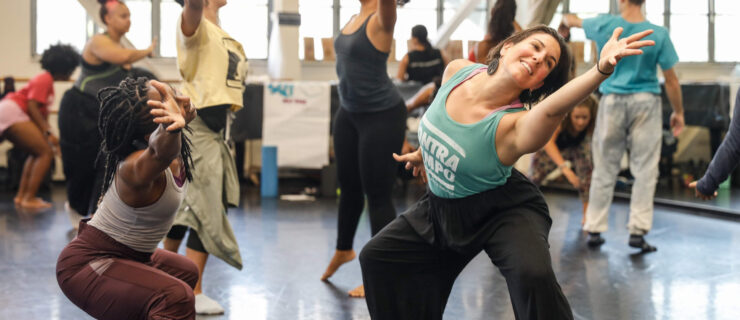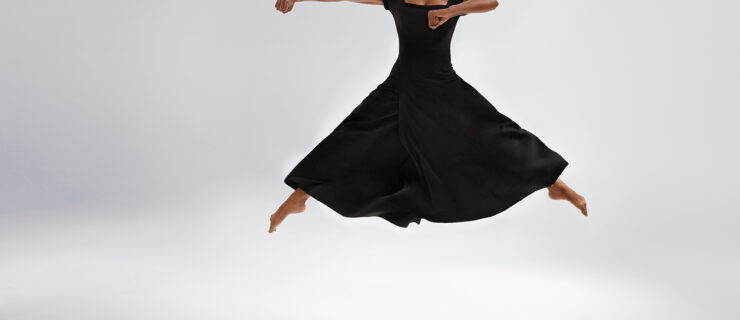Teacher's Wisdom
Zena Rommett is the originator of the Zena Rommett Floor-Barre and Ballet Technique. Her early training under Balanchine and other Russian masters in NYC led to her performing throughout Europe and in several Broadway musicals. During her 60 years of teaching, students have included Tommy Tune, Lar Lubovitch, Patrick Swayze, Judith Jamison, and several generations of Ailey dancers (Linda Celeste Sims is above in a purple unitard).
Rommett currently teaches twice a week at Steps on Broadway in NYC. Jen Thompson participated in her lecture-demonstration at Dance New Amsterdam and asked about the development, effectiveness, and future of her technique.
Why did you decide to put ballet barre on the floor?
I had a beautiful facility so I was put in advanced classes, but because I did not know the basics I studied books on ballet technique. I analyzed the principles, practicing from morning to night. Later when I started teaching ballet, I felt that old-world discipline and precision was missing. So one day in the late ’50s I put my students on the floor, taking the effort of standing out of the equation. We do pliés, tendus, rond de jambes, frappés, cou-de-pied, développés, and grand battements—all with correct transitions and placement. Everything remains in the dancer’s muscle memory when she or he stands up.
When I began teaching Floor-Barre, I only worked the dancers turned out. One day to experiment I had the students bring their legs into parallel. Then and there I discovered the beautiful secret of my technique: By working in parallel, I could correct the body alignment for a perfect turnout. The students loved it. Now floor work has become very popular, but it must be done meticulously to be effective.
How do your exercises improve a dancer’s placement?
Many dancers don’t know how to stand correctly. I see toes come off the floor, which tells me they are hyperextending. I see knees slightly bent. My new approach in class is to stand them up right away and begin to place them correctly. I put them in parallel, lengthening the inside leg muscles with knees together. The weight is forward, energy extending through to the back of the heels. The spine is supple and lengthened.
I then put them on the floor to reinforce placement. First the dancer lies on her back with both knees bent, legs held together in parallel position. There should be no space under the back. All 10 toes are firmly on the floor. Shoulders are down, the stomach held in, hands are on the pelvis. Then we flex one foot at a time, lengthening the leg straight down, away from the torso. The toes of the flexed foot reach back to the knee and there is space under the heel. When both legs are extended the inner leg muscles are held firmly together. This is exactly how the dancer should feel standing up.
Once you lie down on the floor correctly, you can apply that same precision when you stand up. Many of my students arrive early to classes, rehearsals, and performances to give themselves a 20-minute version of my class to tune their bodies.
How does the technique prevent injury, and how can it help recovering dancers?
A weak point, an unaligned joint can escalate into more injuries and ailments like tendonitis. When body alignment is corrected the dancer can have a long, injury-free career. By putting the body on the floor and strengthening each joint and muscle, the dancer can recover from an injury and still work on classical technique. There is no weight-bearing pressure on the injury. In the late ’60s Melissa Hayden from New York City Ballet was one of the first big ballet names to come to me with an injury. When she returned to the stage, The New York Times review said she had never danced better. Judith Jamison from Alvin Ailey said her injury was a blessing in disguise because she discovered Floor-Barre! I’ve saved all my beautiful thank you letters from the past 60 years.
Should children take Floor-Barre?
I want to cry when I see children working incorrectly, with ankles and knees bandaged and their parents telling me they have tendonitis. My technique gives children a strong foundation for unmannered dancing. It strengthens their joints, teaches them how to straighten their legs, and they become so strong. They love it! Their little minds absorb everything and they get excited to learn and feel correct placement. I would love to see Floor-Barre in schools and for all gymnasts, ice skaters, and young athletes. We are planning to open our own space in New York where my work will be archived and Floor-Barre certification and classes will be offered.
How has your technique changed over the past 60 years?
In the ’60s when I worked with company principals, I concentrated more on perfecting technique and giving complicated combinations. Today dance has become very popular and there are many different types of bodies taking class. No matter what body type—big or small, young or mature—they all can work beautifully and correctly. I gear my classes to the students but there are always top professionals there, too, working on the basics.
An innovator of any technique is constantly evolving. I think about my work day and night and how I can improve. I am 87 and I am always learning.




